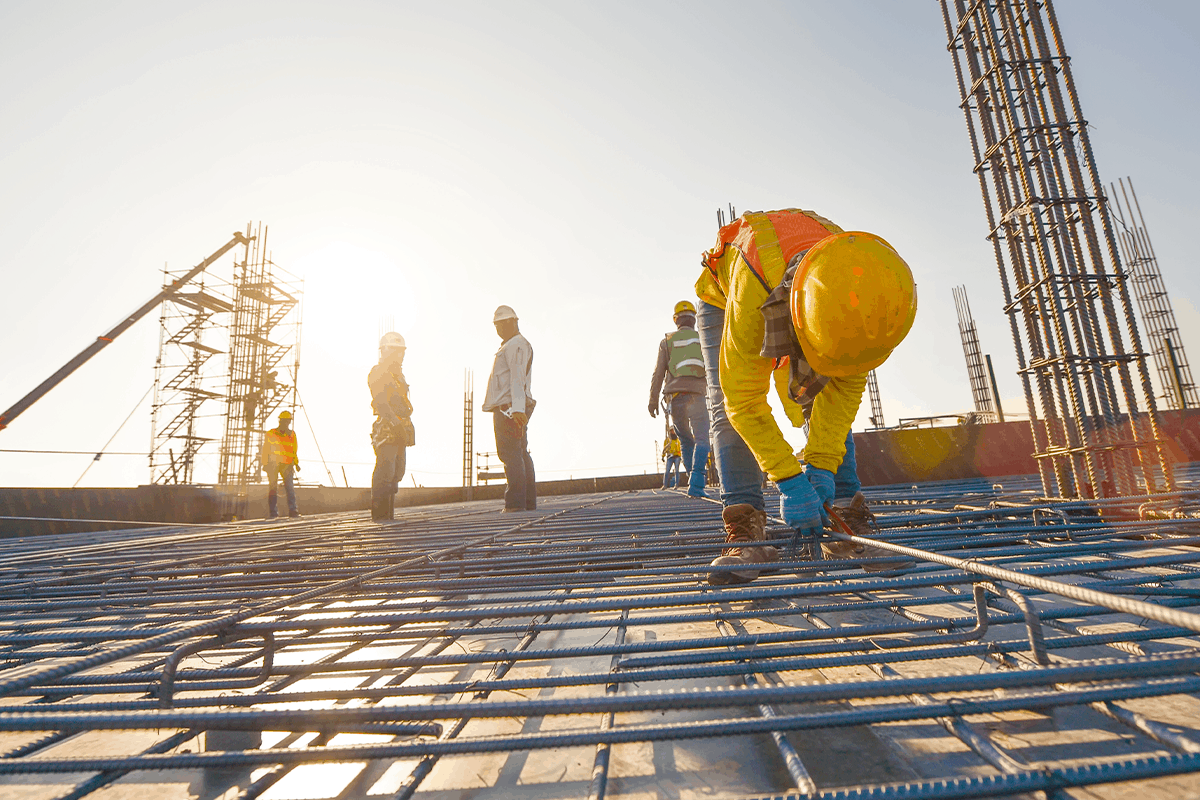
- What can construction companies do to improve workplace safety?
- What are 3 ways to create an on-the-job safety culture?
- Can OrthoLive help construction companies improve their safety record?
Working in the construction industry carries an element of danger. In addition to threats from heavy equipment and the tools construction workers use, the sites themselves carry the potential for safety risk.
In 2020, private employers reported 174,100 workplace injuries in the construction field and 1,102 construction site fatalities. Of the deaths reported annually, one in three are caused by a fall. Although these numbers are trending downward, construction is still one of the most dangerous industries in the nation, so what can companies do to improve safety at a construction site?

What Can Construction Companies Do to Improve Workplace Safety?
Construction companies understand the importance of jobsite safety. The only disconnect occurs from their on-the-ground application of these concepts. We all know that accidents lead to project delays and cost overruns, higher insurance, and reputational damage. Having a strong safety record can have an entirely opposite effect.
While these are obvious statements, there is one thing an organization can do to improve their worksite safety record that may not be so obvious: Engage your workforce in a culture of safety. Here’s how to do it.

What Are 3 Ways to Create an On-the-Job Safety Culture?
Construction site safety can and should move beyond a set of prevention-oriented activities. A safety culture incorporates proactive thinking about how to do the job in a way that protects your “construction athletes” from harm.
The core values of the construction company should incorporate safety first but then back it up with training and constant evaluation to lessen risk. Ultimately, your goal should be to create a workplace with a safety mindset baked right into your culture.
Creating a workplace safety culture should include these 3 elements:
- Ongoing risk assessment
- Ergonomics training
- Establishing immediate onsite injury care
1. Provide Ongoing Risk Assessment
Your jobsite safety team should walk the site every workday to look for any potential problems. Holding brief safety meetings before each shift will also put these issues top of mind before your employees even pick up their first hammer or start up a machine.
You can engage construction teams further by soliciting help from employees at all levels of the business. Consider appointing one safety mentor on every crew to help bring attention to the potential for harm throughout the day. The idea is for one key player on each construction site team to consider the job from a safety perspective and not just by the tasks at hand.
Some suggestions for a safety mentorship program include:
- The safety mentor should be a volunteer
- The safety mentor could receive extra training in the importance of workplace safety
- You could rotate the safety mentor out each quarter for a new volunteer
- The volunteer could receive a pay bump or other incentive for participating
Beyond participating in the identification of onsite safety concerns, this employee could participate in reviewing your company’s safety program or creating on-the-job equipment checklists. The idea is to spread daily awareness of workplace safety across every jobsite team by engaging workers in their own health and security.
2. Provide Ergonomics Training
Construction is as physically demanding as it is hazardous. Lifting, pulling, pushing, bending, or otherwise handling heavy loads can lead to significant injury on the job. Overexertion and body strain are the leading cause of workplace injuries today, and the number of back injuries on U.S. construction sites is 50% higher than the average for all other industries.
Applying ergonomic assessments and training can derail the common injuries that occur from lifting improperly or positioning the body in a way that gets the job done but causes injury in the process. The goal of ergonomics is to find a balance between the worker, their daily tasks, and the job conditions.
Conducting ergonomic assessments of your workforce can help cut down on everything from back pain to sprains, strains, and repetitive motion injuries so common in the trade. The idea is to come up with solutions to reduce injury by devising work arounds that teach construction teams to protect themselves when:
- Applying force
- Bending
- Lifting heavy loads
- Repeating movements
- Stooping
- Stretching overhead
- Using heavy vibrating equipment
- Working in awkward positions
Additionally, trained ergonomics professionals can evaluate common on-the-job behaviors that can lead to injury. They can help employees modify equipment to protect the spine or provide training in how to lift with the legs and not the back. They can recommend the use of tables and sawhorses to raise the level of work and cut down on kneeling and stooping. They may also recommend padding to protect vulnerable knees.
3. Establish Immediate Onsite Injury Care
Should a workplace safety incident occur, it should be immediately triaged. In the past, this kind of quick response meant investing in an onsite medical or safety professional. Given that nearly 90% of all construction site injuries can be treated without additional care, a trip to the ER is overkill, driving up healthcare costs and OSHA reportable events.
Today, a comprehensive musculoskeletal care solution can provide members with access to orthopedic experts 24/7/365. These licensed orthopedic experts can be at your fingertips on any device connected to the internet within just a few minutes and accessible in more than 300 languages. This type of virtual healthcare can save construction companies up to 80% on injury costs.
The goal of these virtual visits is to determine the difference between an ER or urgent care-worthy injury and a simple strain or sprain—and ultimately save you money. However, it also provides workers with the comforting sense that your company is devoted to their health and well-being.

Can OrthoLive Help Construction Companies Improve Their Safety Record?
Creating a culture of construction site safety goes beyond a checklist to turn off a machine. The idea behind these proactive safety measures is to emphasize prevention in addition to providing immediate care.
OrthoLive offers construction companies an immediate, cost-effective way to focus on improved safety outcomes for your business by providing comprehensive musculoskeletal care. Our service offers construction companies:
- Ergonomic assessments
- Personalized safety training and coaching programs
- 24/7/365 complete injury care
- Clinical services and more



